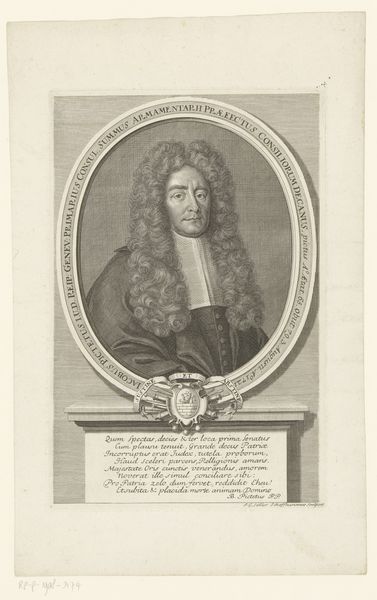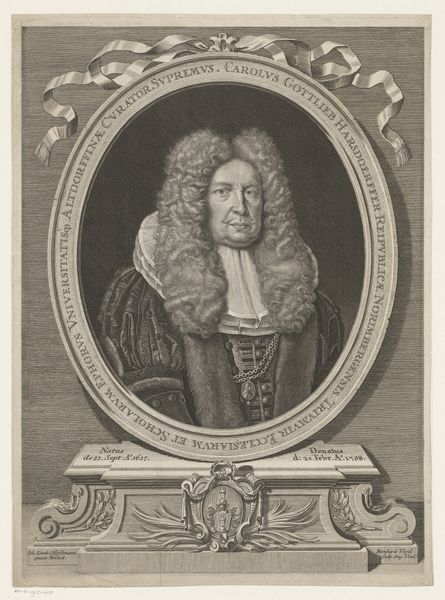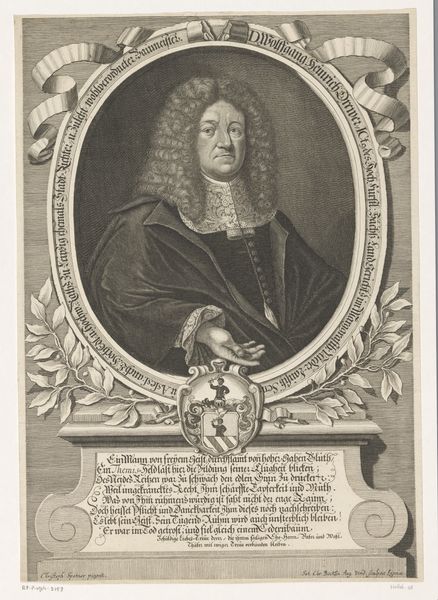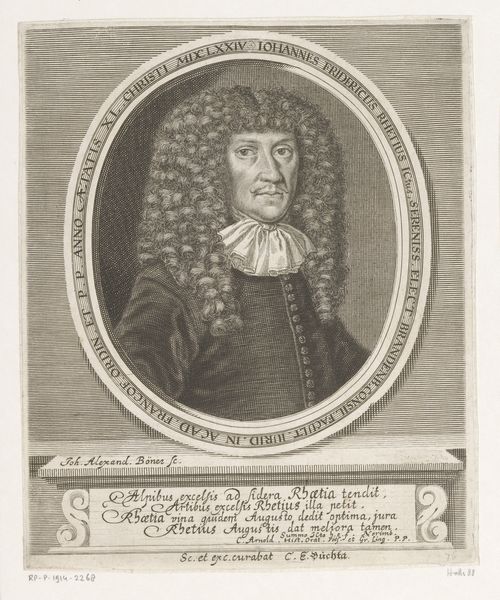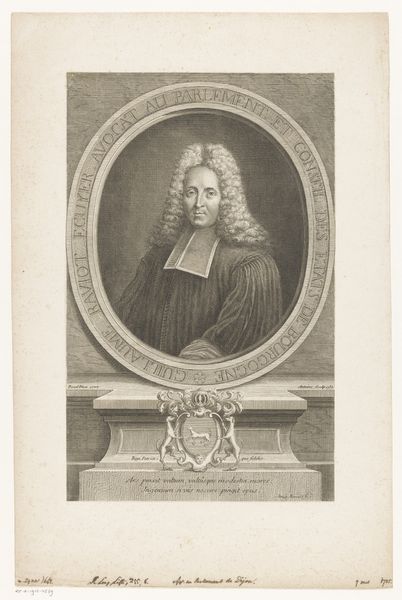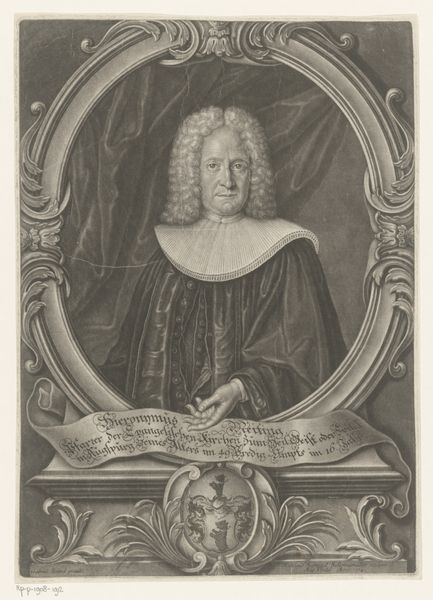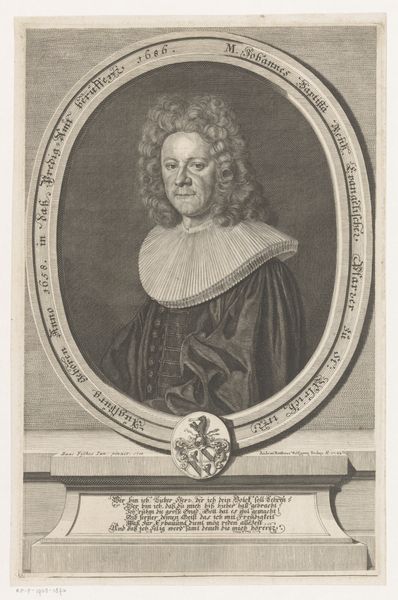
print, engraving
#
portrait
#
baroque
# print
#
engraving
Dimensions: height 327 mm, width 238 mm
Copyright: Rijks Museum: Open Domain
Curator: This print, created sometime after 1723, depicts Johann Georg Gessner. The work itself is an engraving, putting it firmly in the world of reproducible images and the public sphere. What do you think when you first see this, Editor? Editor: My eye is drawn to the meticulously rendered details! Look at the man’s wig, and the incredibly fine lines used to create the tones of his face! It speaks to the patience and skill needed for such a process. Curator: Indeed. Let's not forget the labor involved in producing prints like these. The engraver, Hieronymus Böllmann, is also identified. Printmaking workshops played a key role in disseminating information and shaping public perception, especially with the growing merchant class needing depictions of family and community members. Editor: Right, and this image does speak to the emerging prominence of merchants and burghers in the early 18th century. He is clearly a man of some standing, evidenced by his opulent attire, framed with ornate inscriptions denoting his place within the city. Curator: His clothing reflects the social structures of the time, while the actual material used to create the print would have been relatively accessible, allowing the image to circulate broadly. It creates this interesting tension between representing wealth and accessibility. Editor: And thinking about accessibility, this format allows Gessner to be memorialized, becoming a public figure displayed throughout the city, embedding his likeness within social memory. The print literally weaves him into the social and political fabric of his community. Curator: The placement in the Rijksmuseum is an important contextual layer, of course. It shifts the portrait from being a piece of municipal pride into something that exists to illustrate an artist’s production, as well as a citizen’s place within that period of history. Editor: Exactly. The very act of collection and display transforms its meaning. It allows us to consider the power dynamics and representational strategies employed by these communities of power, in the past and in our current engagement with museums. Curator: Food for thought. This artwork invites us to question both the role of artistic process in documenting individuals, as well as the effect socio-political context has on the perception of civic portraiture within the contemporary world. Editor: Yes, and hopefully that discussion sparks something meaningful for our visitors as well.
Comments
No comments
Be the first to comment and join the conversation on the ultimate creative platform.


